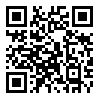مجله رویش روانشناسی از دادن گواهیهای کاغذی معذور است. لطفا تقاضا نکنید. همه گواهی ها در صفحه شخصی کاربران موجود است.
year 13, Issue 9 (Atumn 2024 2025)
Rooyesh 2025, 13(9): 141-150 |
Back to browse issues page
Ethics code: IR.IAU.KHUISF.REC.1402.066
Download citation:
BibTeX | RIS | EndNote | Medlars | ProCite | Reference Manager | RefWorks
Send citation to:



BibTeX | RIS | EndNote | Medlars | ProCite | Reference Manager | RefWorks
Send citation to:
Sajadi S A, Tabatabaeinejad F S, Foroozandeh E, Dehghani F. (2025). Comparing the effectiveness of unified transdiagnostic package and cognitive behavioral therapy on the executive functions of anxiety children. Rooyesh. 13(9), 141-150.
URL: http://frooyesh.ir/article-1-5463-en.html
URL: http://frooyesh.ir/article-1-5463-en.html
1- PhD student, Department of psychology, Naein Branch, Islamic Azad University, Naein, Iran.
2- Assistant Professor, Department of psychology, Naein Branch, Islamic Azad university, Naein, Iran. ,f.tabatabaei49@yahoo.com
3- Associate Professor, Department of psychology, Naein Branch, Islamic Azad university, Naein, Iran.
4- Associate Professor, Faculty of Psychology and Educational Sciences, Yazd University, Yazd, Iran.
2- Assistant Professor, Department of psychology, Naein Branch, Islamic Azad university, Naein, Iran. ,
3- Associate Professor, Department of psychology, Naein Branch, Islamic Azad university, Naein, Iran.
4- Associate Professor, Faculty of Psychology and Educational Sciences, Yazd University, Yazd, Iran.
Abstract: (386 Views)
The present study was conducted to compare the effectiveness of the unified transdiagnostic package and Cognitive behavioral therapy on the executive functions of anxiety children. The research method was semi-experimental with a pre-test-post-test design with a control group and a two-month follow-up group. The statistical population of the research included all anxious girls aged 10 to 12 who were referred to education counseling centers in Yazd in the academic year of 1402, of which 45 were purposefully selected based on the manifest anxiety questionnaire and clinical interview and randomly divided into two experimental groups and one group. Witnesses (15 people in each group) were included. The first and second experimental groups were each subjected to unified transdiagnostic and cognitive behavioral intervention during 16 sessions twice a week. Research participants were evaluated before and after the intervention and also during the follow-up period by the Executive Functions Questionnaire (EFQ) (Coolidge, 2002). Data analysis was done with the variance analysis method with repeated measurements and the Bonferroni test. The obtained results showed that the scores of executive functions in both intervention groups increased significantly compared to the control group (p<0.05). The effect of both intervention methods had a lasting effect until the follow-up stage. Also, there was no significant difference between the effectiveness of the two methods (p>0.05). In general, both interventions are suitable for improving the executive functions of anxious children.
Keywords: Executive Functions, Anxiety, Unified Transdiagnostic Package, Cognitive Behavioral Therapy.
Type of Article: Research |
Subject:
Clinical Psychology
Received: 2024/06/17 | Accepted: 2024/08/1 | ePublished: 2025/01/29
Received: 2024/06/17 | Accepted: 2024/08/1 | ePublished: 2025/01/29
Send email to the article author
| Rights and permissions | |
 |
This work is licensed under a Creative Commons Attribution-NonCommercial 4.0 International License. |





